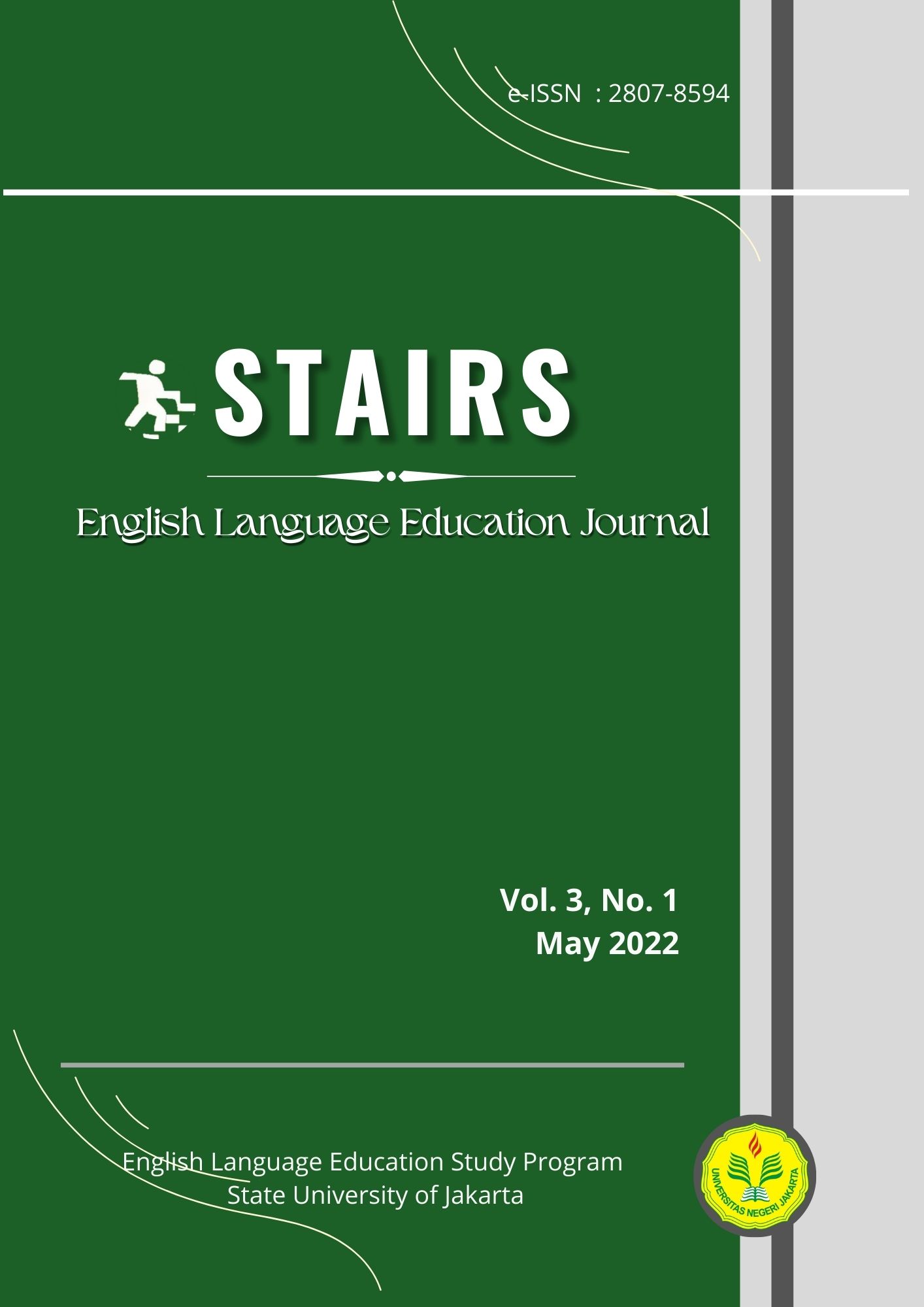Cultural Contents in Digital Authentic Greeting Cards as English Teaching Materials for Junior High Schools
DOI:
https://doi.org/10.21009/stairs.3.1.3Keywords:
cultural content, digital authentic greeting cards, English teaching materials, Moran’s framework, Chao’s frameworkAbstract
This study aimed to discover the cultural contents in the digital authentic greeting cards as English teaching materials for junior high schools. The research data were the cultural values in the form of words, phrases, clauses, or sentences that are contained in the texts on the digital authentic greeting cards. The data sources were taken from several websites providing free digital greeting cards to be downloaded. The data were analyzed with the framework of the cultural dimensions by Moran (2001) and the cultural sources by Chao (2011) by using a qualitative content analysis method. The findings revealed 101 cultural contents that were classified into the four cultural dimensions and three sources of culture. The cultural contents were mostly identified in the Universality across Culture and represented by the Practices dimension through activities and language expressions. It was indicated that a large proportion of the cultural contents were included in universal contents that are not specific to any particular country and were represented by actions and interactions carried out by the cultural members.
References
Chao, T. (2011). The Hidden Curriculum of Cultural Content in Internationally Published ELT Textbooks: A Closer Look at New American Inside Out. The Journal of Asia TEFL, 8(2), 189-210.
Creswell, J.W. (2012). Educational Research: Planning, Conducting and Evaluating Quantitative and Qualitative Research. Boston: Pearson Education.
Encyclopædia Britannica. (2017). Greeting Card. In Britannica.com encyclopedia. Retrieved July 25, 2021, from https://www.britannica.com/print/article/245448.
Fauza, N. (2018). Cultural Content Analysis of English Textbooks for Senior High School Entitled “Bahasa Inggris 2017 Revised Edition” (A Descriptive Qualitative Research). [Bachelor’s thesis, Universitas Islam Negeri Ar-Raniry].
Gheyle, N., & Jacobs, T. (2017). Content Analysis: A Short Overview. Ghent University.
Gonzalez-Vera, P. (2016). The E-generation: The Use of Technology for Foreign Language Learning. In A. Pareja-Lora, C. Calle-Martínez, & P. Rodríguez-Arancón (Eds.). New perspectives on teaching and working with languages in the digital era (pp. 51-61). Dublin: Research.
Kim, S., & Paek, J. (2015). An Analysis of Culture-related Content in English Textbooks. Linguistic Research, 32, 83-104.
Kozhevnikova, E. (2014). Exposing Students to Authentic Materials as a Way to Increase Students’ Language Proficiency and Cultural Awareness. Procedia – Social and Behavioral Sciences, 116, 4462-4466. https://doi.org/10.1016/j.sbspro.2014.01.967.
Masturah, N. A. (2019). Cultural Content Analysis in English Textbook “English on Target” for SMA/MA Grade X. [Bachelor’s thesis, Universitas Sebelas Maret].
Mayuni, I. (2020, September 2). Sessions 2-3 Presentation: 21st-Century Skills [Course presentation]. PS-PBI FBS, Universitas Negeri Jakarta.
Moran, P. R. (2001). Teaching Culture: Perspectives in Practice. Boston: Heinle & Heinle.
Rao, P. S. (2019). The Effective Use of Authentic Materials in the English Language Classrooms. International Journal of Arts, Science, and Humanities, 7(1), 1-8. https://doi.org/10.34293/sijash.v7i1.556.
Reimann, A. (2009). A Critical Analysis of Cultural Content in EFL Materials. 宇都宮大学国際学部研究論集, 28, 85-101. https://uuair.lib.utsunomiya-u.ac.jp/dspace/handle/10241/7783.
Scrivener, J. (2005). Learning Teaching: A Guidebook for English Language Teachers. Macmillan Education.
Valentina, G. (2020). Cultural Contents in Reading Texts of TKD Penmaba UNJ. [Bachelor’s thesis, Universitas Negeri Jakarta]. Repository Universitas Negeri Jakarta. https://repository.unj.ac.id/10136/
Xiao, J. (2010). Cultural Contents of an In-use EFL Textbook and English Major Students’ Attitudes and Perceptions towards Culture Learning at Jiangxi University of Science and Technology, China. [Master’s thesis, Prince of Songkla University].
Yuen, K. (2011). The Representation of Foreign Cultures in English Textbooks. ELT Journal, 65, 458-466. https://doi.org/10.1093/elt/ccq089.
Zulkarnaen., Ikhsanudin., & Sada, C. (2017). Cultural Content and Context in the Textbook “When English Rings A Bell” Used by Grade Seventh Students of SMP Mandiri Pontianak. Jurnal Pendidikan dan Pembelajaran Khatulistiwa, 6(4), 1-9.



